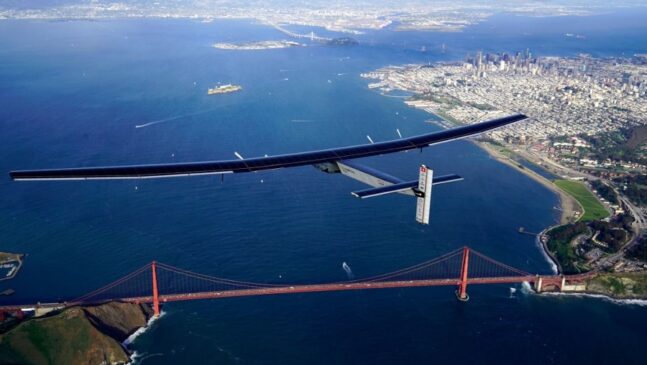In this month’s blog, Tim Benson, Chair of Powerful Thinking takes us on a sun-powered sky-ride through the ins and outs of solar flight. From a potted history since the first every solar powered plane took off in 1974 to recent developments in technology and the organisations and start ups that are leading the way in the current market.
In 2022 aviation accounted for 2% of global energy-related CO2 emissions, reaching almost 800Mt of CO2e globally. As both passenger and cargo flights return to pre-Covid levels, this is expected to increase by around 3-4% annually. Fuel producers like Neste and BP have made some decent progress with the development of drop in sustainable aviation fuels (SAF), which can reduce these emissions by up to 80%. SAF can be produced from a number of sources, including waste oil and fats, green and municipal waste and non-food crops, but it remains considerably dearer than conventional aviation fuel. Nonetheless, the aviation industry is acutely aware that other factors need to come into play to improve the emissions associated with flying, including more efficient aircraft design and electrification.
Cue this month’s blog topic, solar flight. The first ever solar flight took place on 4th November 1974 over the dry lake at Camp Irwin, California. Sunrise I, the brainchild of Astro Flight’s R.J. Boucher, flew for 20 minutes at an altitude of 100m. Since then, the R&D has come a long way, culminating in the first solar powered round the world flight, which was completed on 26th July 2016. This plane, christened Solar Impulse 2, was co-developed and piloted by Swiss explorer Bertrand Piccard and Swiss engineer Bertrand Borschberg. It landed in Abu Dhabi following a 14 month and 25,000 mile round the world trip, during which the plane spent 550 hours airborne – without consuming a single drop of liquid fuel! With a wingspan larger than a B-747 jumbo jet, but only weighing around 2,268Kg, it incorporated a staggering 17,248 photovoltaic solar cells, each one roughly the thickness of a human hair, knitted across its wings and fuselage. During the daytime, these cells basked in the sunlight, charging the plane’s four lithium batteries to keep its propellers spinning through the dark night-time hours.
In 2019 Skydweller Aero, a Spanish start-up, bought Solar Impulse II, with a view to converting it into the first commercially viable ‘pseudo-satellite’. A pseudo satellite is essentially a pilotless vehicle capable of high-altitude endurance flights, but with greater flexibility and considerably less environmental impact, as there is no need to launch rockets into space. Following extensive modifications, Solar Impulse II has conducted a further 12 successful piloted test flights since 2020. Skydweller’s CEO, Robert Miller, asserts that the company now has the technology to fly the aircraft autonomously and are working on converting it into a kind of drone, capable of staying in the air for months at a time and performing the same kinds of services as conventional orbiting satellites, for example telecommunications, earth imaging, disaster response and the monitoring of natural resources.
Other organisations have since jumped on this band waggon, most notably SolarStratos, who are developing a solar plane capable of exploring the upper atmosphere to conduct climate experiments. Their plane, the HB-SXA, was designed by Calin Gologan and Elektra Solar GmbH, and is propelled by twin 19kW electric motors operating at 2,200rpm. Circa 22 square meters of next generation solar cells, with a 22-24% efficiency rating, are affixed to the wings and will recharge the plane’s 14kWh lithium-ion batteries. Following some improvements to the propellor system design and an increase in battery storage capacity, HB-SXA is set to break the altitude record for a manned solar flight in 2024.
Whilst it’s clear that we won’t be flying off on holiday to Magaluf in a solar-powered plane for quite some time yet, it is good to know that this technology is being applied to high altitude meteorological applications that typically undermine any scientific advancements they achieve, because their associated emissions are so considerable, pervasive and damaging.
This guest blog originally appeared in the January 2024 Vision: 2025 newsletter. Sign up to receive monthly event sustainability news, case studies and guest blogs direct to your inbox www.vision2025.org.uk

